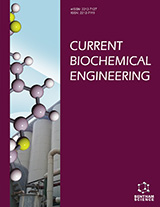Abstract
Bioremediation is a type of biodegradation that involves the phenomenon of
biological transformation of organic compounds by living organisms. Biodegradation
mainly involves the conversion of complex organic compounds into simpler and nontoxic compounds. Bioremediation is a natural and genetically engineered technology
that involves cleaning up polluted air, water, and soil using various forms of life such
as bacteria, fungi, fishes, algae, animals, and plants. Bioremediation includes
biotransformation which is the incomplete biodegradation of organic compounds and it
is employed for the synthesis of commercially important products by microorganisms.
The other names which can be used for bioremediation are biotreatment, bioreclamation, and biorestoration. Bioremediation is mainly used for the degradation of
xenobiotics. Xenobiotics are substances that are man- made or synthetic that take a
very long time to degrade. They are also known as recalcitrants. Some examples of
recalcitrants are pesticides, herbicides, refrigerants, solvents, and other organic
substances. Accumulation of these substances in soil, water, air, and water causes so
many problems. Therefore, we can use bioremediation to remove these chemicals from
the environment. So it will be a very good solution for the environmental problems
caused by toxic chemicals.






















